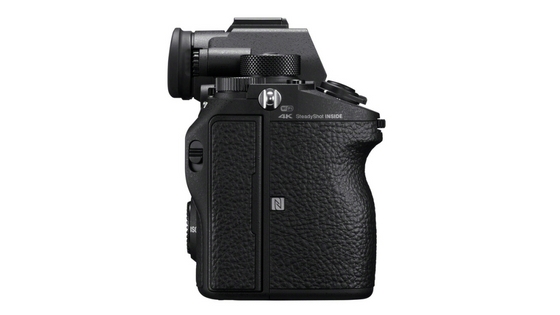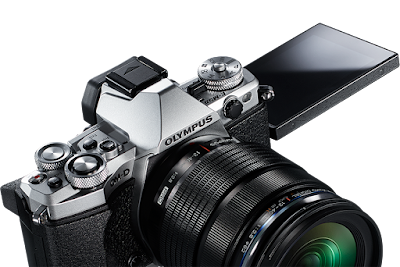Photography is a burgeoning field of interest these days, and if you look around, you will see that almost everyone owns a camera these days and that too, a high-end one. Unlike old times, the digital revolution has made
photography an affordable hobby for all. However, getting an expensive camera and supporting gear does not mean that your pictures will look amazing. Beautiful pictures require a creative aptitude, quite a deal of thought, and clear concepts about what do you want your picture to look like. I am, hereby, sharing few
simple techniques which may help you click awesome pictures when shooting birds.
Be patient
Device : Nikon D7000
Lens : VR 70-300 mm f/4.5-5.6G
Focal Length :185mm
Aperture : f/8
Shutter Speed : 1/1000
ISO :250
Yes, I am saying
patience first and most important part of bird photography. Always remember you, as a photographer, are an intruder to their world. They don't expect you to be here. They fear from you. They believe you are outsider to their world who has potential to destroy their little precious sweet world. So, you have to work hard to make yourself as a part of their little world. You need to become a part of their environment. You should not look like an outsider, but like an integral part of their environment. Don't chase them; instead wait for them patiently to come close to you. Yes, they will allow you to come too close to them once they start believing in you; once they start feeling you as part of their little sweet world.
Try to be a part of their 'Environment'
Device : Nikon D7000
Lens : VR 70-300 mm f/4.5-5.6G
Focal Length :185mm
Aperture : f/5.6
Shutter Speed : 1/3200
ISO :200
I am talking about to be a
part of their environment, but how that can be achieved. What does it mean to be a part of environment? Is it really too hard to understand? Nope, it is not, but yes patience plays the most important part here. At first, try to understand your environment, feel its color, its sound, its music. Look around you, what's the color of soil, what's the color of trees and plants. Dress according to your surroundings. Don't dress with bright color, It attracts too much attention. Always try to wear light color, preferably light green.
Wait for your bird to come near you
Device : Nikon D7000
Lens : VR 70-300 mm f/4.5-5.6G
Focal Length :185mm
Aperture : f/5.6
Shutter Speed : 1/1000
ISO :125
Yes, you read it correctly.
Wait for your bird to come near you. Believe me it is the hardest part of bird photography, but not impossible one. Never chase your bird, the more you chase the more it will run away and it will alert others also. Listen to their voice, observe their movement, try to find out their frequent visiting places. Go to that place, stay low. Better lie down on the grass and wait for them to come near you.
Always be ready with your camera
Device : Nikon D7000
Lens : VR 70-300 mm f/4.5-5.6G
Focal Length :80mm
Aperture : f/7.1
Shutter Speed : 1/1000
ISO :100
Remember you are not shooting some portrait or fashion photography where your subject will give you poses according to your choice and time. Here, you are doing bird photography where your object doesn't want to get clicked. They just want to live their live peacefully. They will come to you or give some action pose, that too unintentionally for a fraction of time, hardly for 3 to 4 seconds. If you want to get the best pic then better utilize these 3 to 4 seconds beautifully. You may not get these 3 to 4 seconds for whole day. Keep your setting
ready.
Visualize your frame
Device : Nikon D7000
Lens : VR 70-300 mm f/4.5-5.6G
Focal Length :270mm
Aperture : f/5.6
Shutter Speed : 1/1250
ISO :200
Visualize your frame through naked eye.
Camera is just a tool to capture your thought, your story. You are the one who sees the beauty, the story, the uniqueness. Camera just reflects it to the frame. So feel the beauty and see it through your eye.
Customize camera setting
Device : Nikon D7000
Lens : VR 70-300 mm f/4.5-5.6G
Focal Length :145mm
Aperture : f/4.8
Shutter Speed : 1/3200
ISO :200
I purposefully delayed this topic as I truly believe
camera setting is something which can be learnt too quickly by reading few blogs (like this one), and by watching YouTube videos, but the first three points which I mentioned are really hard ones to master the essential part of bird photography.
It's totally up to you, what you want to capture. If you want to capture motion, then keep your shutter speed low and move your camera with your object so that your object becomes stationary with respect to the camera, but background will become blurred with a trail in one direction, giving your object a motion.
If you want a sharp image, keep your shutter speed high which makes your object sharp, and also it makes everything stationary.
Always shoot in Continuous Focus Mode
Device : Nikon D7000
Lens : VR 70-300 mm f/4.5-5.6G
Focal Length :300mm
Aperture : f/5.6
Shutter Speed : 1/1000
ISO :200
Your object (bird in this case) moves very fast, and its path is also very random. It is very hard to focus manually to their flying path. So, keep your camera on
continuous mode. It resets the focus point according to flying path.
Keep your ISO as low as possible
Device : Nikon D7000
Lens : VR 70-300 mm f/4.5-5.6G
Focal Length :300mm
Aperture : f/5.6
Shutter Speed : 1/3200
ISO :200
High ISO makes the camera more sensitive to light, but it also introduces unnecessary noise to your photo, which reduces the beauty of your photograph. Mostly bird photography is done at day time, where you get sufficient amount of light. So it's better keep your
ISO below 400 and adjust your light using shutter speed and exposure.
Use proper lens
Device : Nikon D7000
Lens : VR 70-300 mm f/4.5-5.6G
Focal Length :300mm
Aperture : f/7.1
Shutter Speed : 1/500
ISO :100
I am mentioning this in the later part, because it is achievable at any point of time according to your purchasing capacity. Lens' price vary from $400 to $2000 according to your choice. Always use VR (Vibration reduction) lens. I personally found
Nikon 70-300mm VR lens good with sunlight.
Always shoot in Raw mode
Device : Nikon D7000
Lens : VR 70-300 mm f/4.5-5.6G
Focal Length :300mm
Aperture : f/5.6
Shutter Speed : 1/1000
ISO :100
Raw mode gives you independence for post processing. It captures maximum color, and you can adjust them according to your choice in post processing.
Hope you understood the points I made. Now it's time to pick up your gear and start shooting (not with the gun, of course).














































